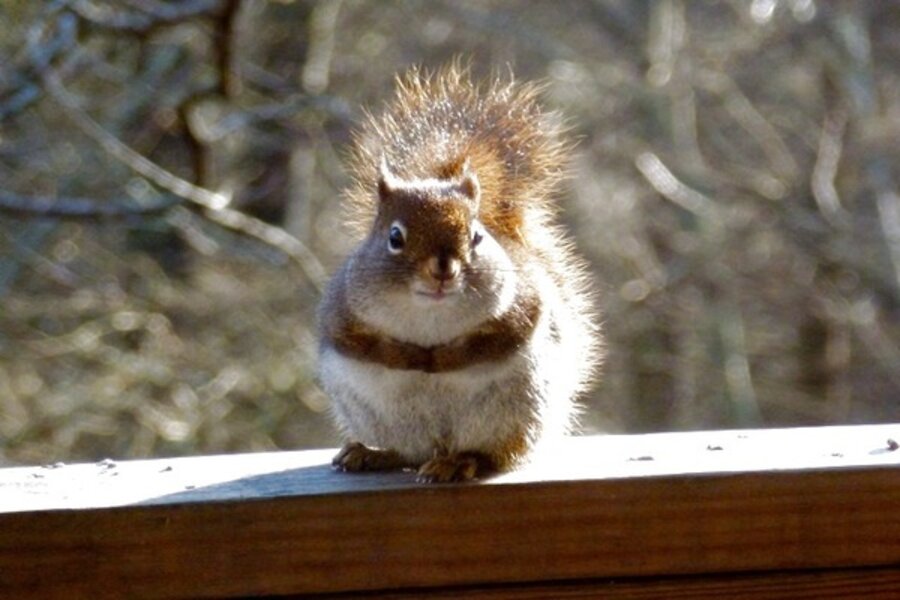Red squirrels fight to survive in the Appalachian mountains
Loading...
Some of my past Rose Whisper postings included rants about the problems I had with bunnies and Eastern gray squirrels while living in Maryland.
The bunnies looked cute and innocent, but they were rose-garden wrecking crews. Every year those wascally wabbits defoliated my new bushes, then stared at me defiantly as if challenging me to do something about it. I wanted to wring their furry necks.
Squirrels not only destroyed the last bird feeder my dad made, they made a Christmas feast out of the wires connected to the defrosting mechanism in our heat pump. The squirrels weren’t injured by their antics, but my repair bill was quite a shock.
When we moved to the mountains of North Carolina in May, we left the bunnies behind and brought along our tried and true squirrel-proof bird feeders. All went well until I spied a tiny critter that could hang on and eat without making the feed holes close, as they would under a gray squirrel’s weight.
At first I thought the acrobat was a clever baby gray, but I soon learned this new, infuriating pest was an American red squirrel.
Red squirrels are fast and feisty
Unlike hulking two-pound, 18-inch gray squirrels, reds -- called “boomers” in the mountains -- are about 8 inches long and weigh barely 8 ounces. They have strong hind legs and curved claws that help them ably climb. They can also swim.
Despite their diminutive size, red squirrels are brave, brazen, and don’t mind barking and chattering at you if you try to chase them away. In fact, they can “bark” at you for more than an hour if you really irritate them.
After weeks of trying to discourage the little devils, I began to admire these pretty, gutsy creatures.
For starters, they are extremely speedy. Mountain folk say they can snag a pine cone from a tree branch and be waiting on the ground by the time it falls.
Forgetful eaters
Although they prefer to dine on conifer seeds, some industrious reds also gather mushrooms, tear them into slices, and carry them to tree cavities to dry.
During the summer and autumn, they hide hundreds of pine cones and other nonperishable tidbits in hollow trees or underground stashes called middens. These “pantries” are supposed to keep them going until spring arrives.
Even though reds gather significantly more food than other squirrels, they often forget where they’ve left their treasures. As a result, fewer than 30 percent of juveniles survive their first winter.
After reading about the high boomer mortality rate, we started putting out extra goodies on the deck railing to complement their diet of seeds, berries, bugs and nuts.
We want our little reds to be around to entertain and annoy us for many years to come.
PSSST: We also have white squirrels in the area that are said to have taken up residence after a carnival truck overturned near Brevard, N.C., in 1949.
------
Lynn Hunt, the Rose Whisperer, is one of more than a dozen expert gardeners who blog regularly at Diggin' It. She's an accredited horticultural judge and a Consulting Rosarian Emeritus for the American Rose Society. She has won dozens of awards for her writing in newspapers, magazines, and television. After a recent move, she grows roses and other plants in her garden in the mountains of western North Carolina. To read more by Lynn, click here.You can also follow her on Twitter and read her Dirt Diaries.







